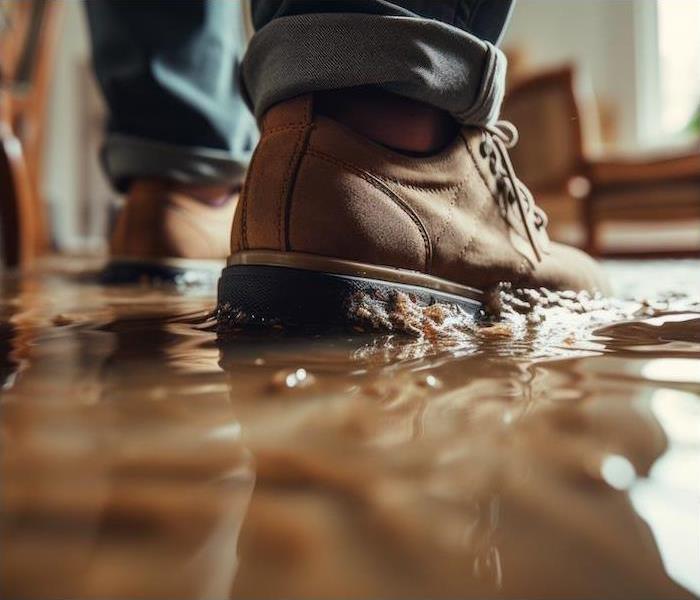The Basics of Flood Damage and Prevention | SERVPRO of Rapid City
4/1/2024 (Permalink)
 SERVPRO of Rapid City is ready to help in a moments notice after spring showers leak in to your home or business.
SERVPRO of Rapid City is ready to help in a moments notice after spring showers leak in to your home or business.
When you really want to get a task done well, do you just jump right in and tackle it all at once or do you break it down to the basics and work your way in? Oftentimes, starting at the beginning can help you tackle a problem more completely and will work better for you in the long run.
This is especially true when it comes to preventing home damage during severe weather or other home disasters. If you take simple prevention steps now, you will be much more likely to find success when the situation does occur.
Home and property flooding is a serious issue that can happen at any time, so use the steps below to help you prepare for this unfortunate type of emergency.
Floods are usually associated with massive weather events, but that is not always the case. Sure, they can occur when it is raining heavily, but they can also happen when water lines break or when appliances malfunction. Either way, knowing what to do and how to react is crucial.
Do you know if your home is in a designated flood zone? Due to our close proximity to the Black Hills, we can experience higher instances of flooding than other communities around us, so it is important to know your home’s specific risk.
Even if you are not in a flood zone directly, you should still take precautions to help your home stay dry. Adding extra drainage to your yard or lengthening your downspouts can help encourage all that water to flow somewhere more productive.
If your property has a lot of trees, make sure that your gutters are cleared regularly or install gutter covers to keep any yard debris and leaves out of your system. In addition, you should be checking your roof regularly for signs of damage after every storm.
While it is necessary to understand the various threat levels for our area, it is also important to take steps to protect your property. If you have suffered flood damage before, that experience might actually help you make some meaningful changes to your home.
For example, if your basement tends to flood when it rains, you can use that knowledge to invest in a professional yard grading. If your yard slopes away from your home instead of backward toward your foundation, gravity can help pull the rain down into a more productive place. You can also use this knowledge to purchase things for your home like new seals for your windows and doors or a sump pump to help keep water out of the lowest areas of your home.
Even if you start with the basics of flood prevention and work hard to keep your property dry, we all know that Mother Nature is unpredictable. Call us day or night for a quick restoration.
Do you have water damage in your home? Contact us at SERVPRO® for fast recovery.






 24/7 Emergency Service
24/7 Emergency Service